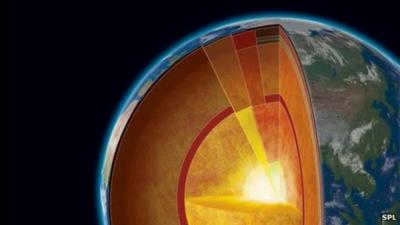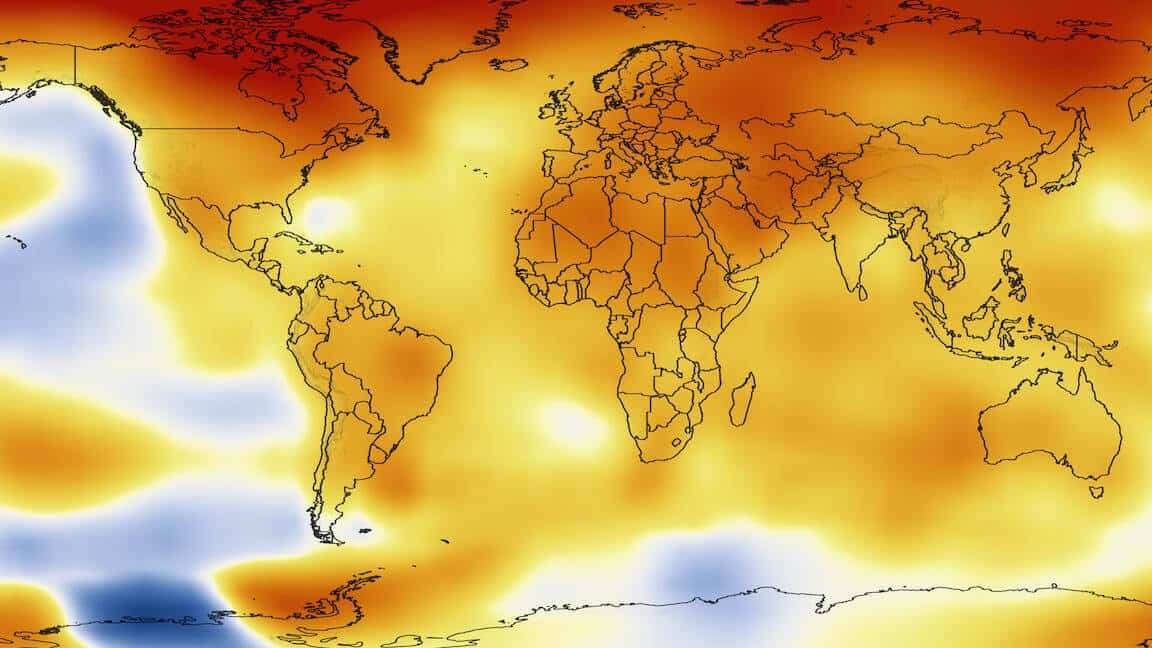Earth’s temperature – a description for kids: distribution, surface indicator, air and core temperature of the third planet from the Sun, as well as the highest and lowest temperatures.
We are always curious about the temperature of our home, the Earth, which is the third planet in our solar system. It’s important for children to understand the climate and know where the highest and lowest temperatures can be found on Earth. Moreover, it’s crucial for them to realize how these temperatures are formed.
Even for the youngest ones, it’s no secret that Earth is the only planet we know of that supports life. This is possible due to its location in the “habitable zone” – the perfect distance from a star that allows water to exist in a liquid state.
Starting with the Earth-Sun distance is a crucial aspect when explaining to children. This distance plays a significant role in understanding the topic. For instance, let’s consider Venus, which is closer to the Sun and has become the hottest planet in our solar system, with temperatures reaching up to 400°C. On the other hand, if we look at Mars, which is located behind Earth, the temperatures drop significantly to -60°C.
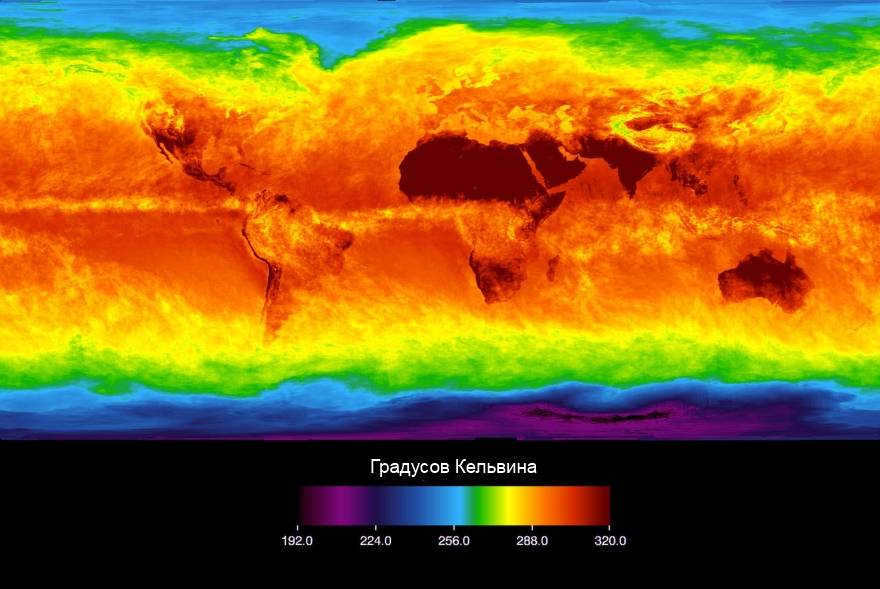
To determine the temperature, scientists utilize NASA’s Aqua satellite tool, known as the Atmospheric Infrared Sensor (AIRS), which operates using infrared wavelengths. The provided image displays temperature measurements of both the Earth’s surface and clouds during the month of April in 2003. The color scale ranges from -81°C (depicted in black and blue) to 47°C (represented in red).
It is crucial to clarify to children that the atmosphere plays a significant role in regulating the Earth’s temperature. Not only does it shield the planet from the effects of celestial objects and solar radiation, but it also helps retain the heat emanating from within the Earth.

The average temperature on Earth reaches 16°C. However, it is important for educators to educate children that this temperature can vary significantly across different areas due to factors such as weather conditions, seasons, and ocean currents. Generally, summers tend to be warmer than winters, and equatorial regions experience higher temperatures.
What Causes Earth’s Temperature Extremes – Explained for Kids
The World Meteorological Organization (WMO) claims that the coldest place on Earth is Vostok Station in Antarctica. On July 21, 1983, a temperature of -89.2 °C was recorded, marking the lowest temperature ever recorded on Earth. If we consider inhabited areas, the title goes to Oymyakon, a small village in Siberia, where temperatures can drop to -45°C.
There is still some controversy surrounding the hottest place on Earth. For 90 years, El Aziziya in Libya held the record, with temperatures reaching a scorching 58°C on September 13, 1922. However, in 2012, the WMO removed it from the list, as a committee of climate experts from 9 countries concluded that the recorded temperature was inaccurate.
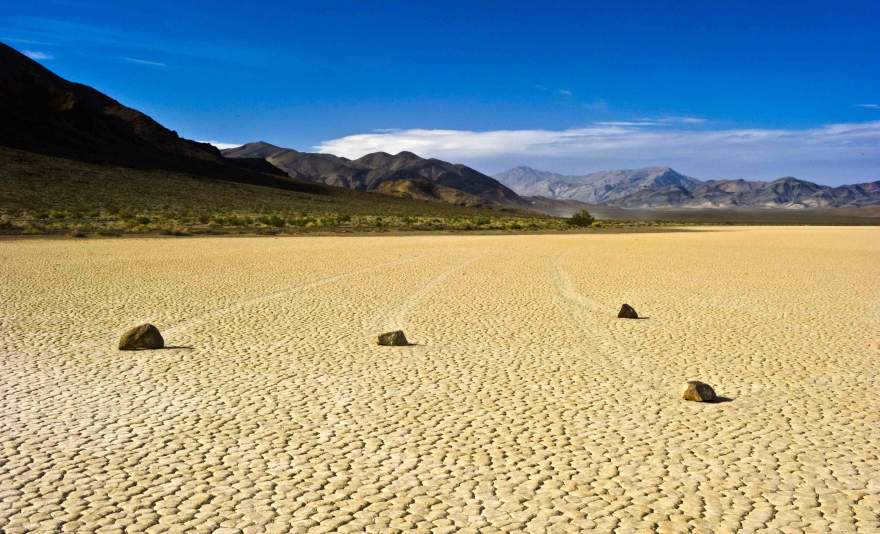
Death Valley National Park, USA
Therefore, the most recent location of extreme heat was Greenland Ranch in Death Valley, California, where the temperature reached 56.7°C (the highest temperature on the planet) on July 10, 1913. However, it is important to note that this measurement specifically refers to the air temperature. In contrast, in 2004 and 2005, satellite data recorded the highest surface temperature of 70.7°C in the Lut Desert located in Iran.
An explanation for kids: The warmest and coolest temperatures on each continent
Explanation of Earth’s Temperature Rise for Kids
It’s important for kids to understand that the average temperature of the Earth has increased by 0.8°C since the 1880s. The most significant increase has occurred in the past decade. This phenomenon is commonly referred to as global warming. While there is still ongoing debate among climatologists about the severity of the issue, everyone agrees that the Earth has indeed become warmer. The main concern with this warming trend is the melting of glaciers, which will result in rising sea levels. Scientists predict that by the year 2040, there may be no ice left in Antarctica at all.
It’s worth noting that these temperature changes are all indicators of the Earth’s surface being heated by the Sun, which is influenced by the tilt of the Earth’s axis and its orbital location. However, there are also other factors to consider, such as the temperature of the Earth’s air and core. Kids can learn more about these indicators and the overall structure and composition of the Earth on dedicated educational pages.
Various elements impact the temperature of our planet, and one crucial factor is the distance from its surface. The outer layers of the Earth’s crust can remain frozen for extended periods, while the inner core, located deep within the planet, gradually heats up to levels similar to the scorching temperatures found on the surface of the Sun.


Heat Generation and Distribution in Earth’s Layers
The average temperature of planet Earth is 14.8ºC. As you go deeper into the Earth’s crust, the temperature gradually increases. The temperature increases by 3°C for every 100 meters of depth. This temperature gradient holds true for most regions, with a few exceptions.
The highest temperature change occurs in a location in the United States, where the temperature increases by 100°C for every 1000 meters of depth. On the other hand, the lowest temperature change is observed in South Africa, where the difference does not exceed 6°C over a similar depth.
Once the depth reaches 20 km, the rate of temperature increase slows down.
The primary source of warmth for the Earth’s surface is solar radiation. The average amount of energy from the sun that reaches our planet is 341 watts per square meter.
Furthermore, there are internal factors that contribute to the heating of the Earth’s deep layers. These factors include:
- Decay of isotopes;
- Tectonic processes occurring in the mantle;
- Differentiation of matter caused by gravity;
- Phase and chemical transformations;
- Tidal friction related to the Moon.
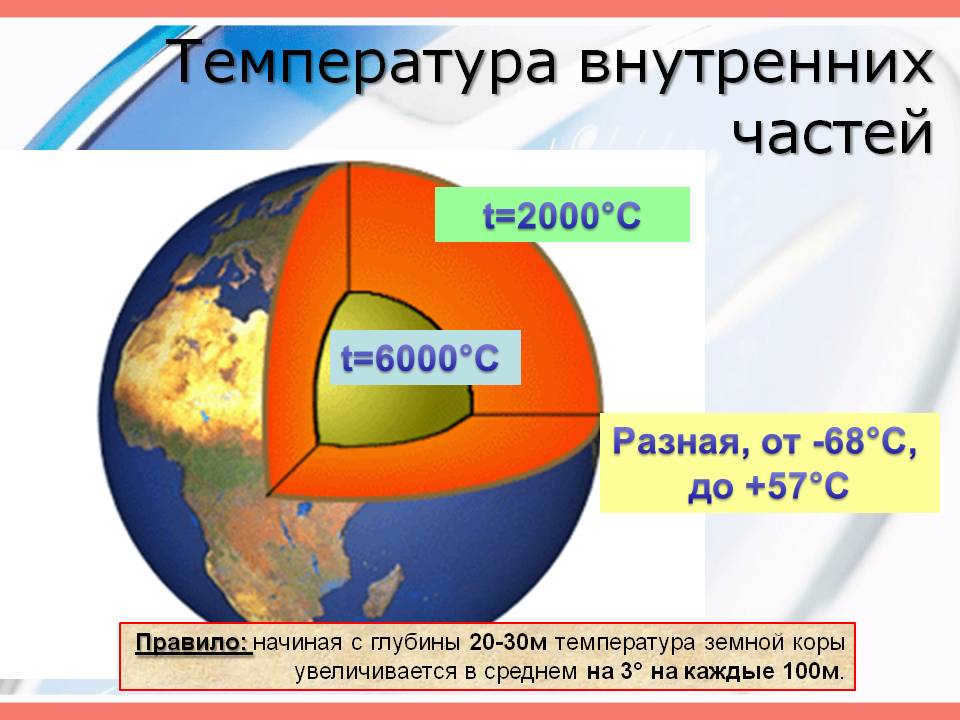
Their impact on the Earth’s surface is minimal. The amount of energy it receives does not exceed 0.03 – 0.05 W per square meter.
Temperature Table for Various Depths of the Earth
The temperature values for various depths are provided in the table.
Calculation Method
The calculation of the average temperature of the earth’s surface involves adding data collected from various locations across the globe and dividing it by the number of measurement points. Seasonal variations do not surpass 2°C.
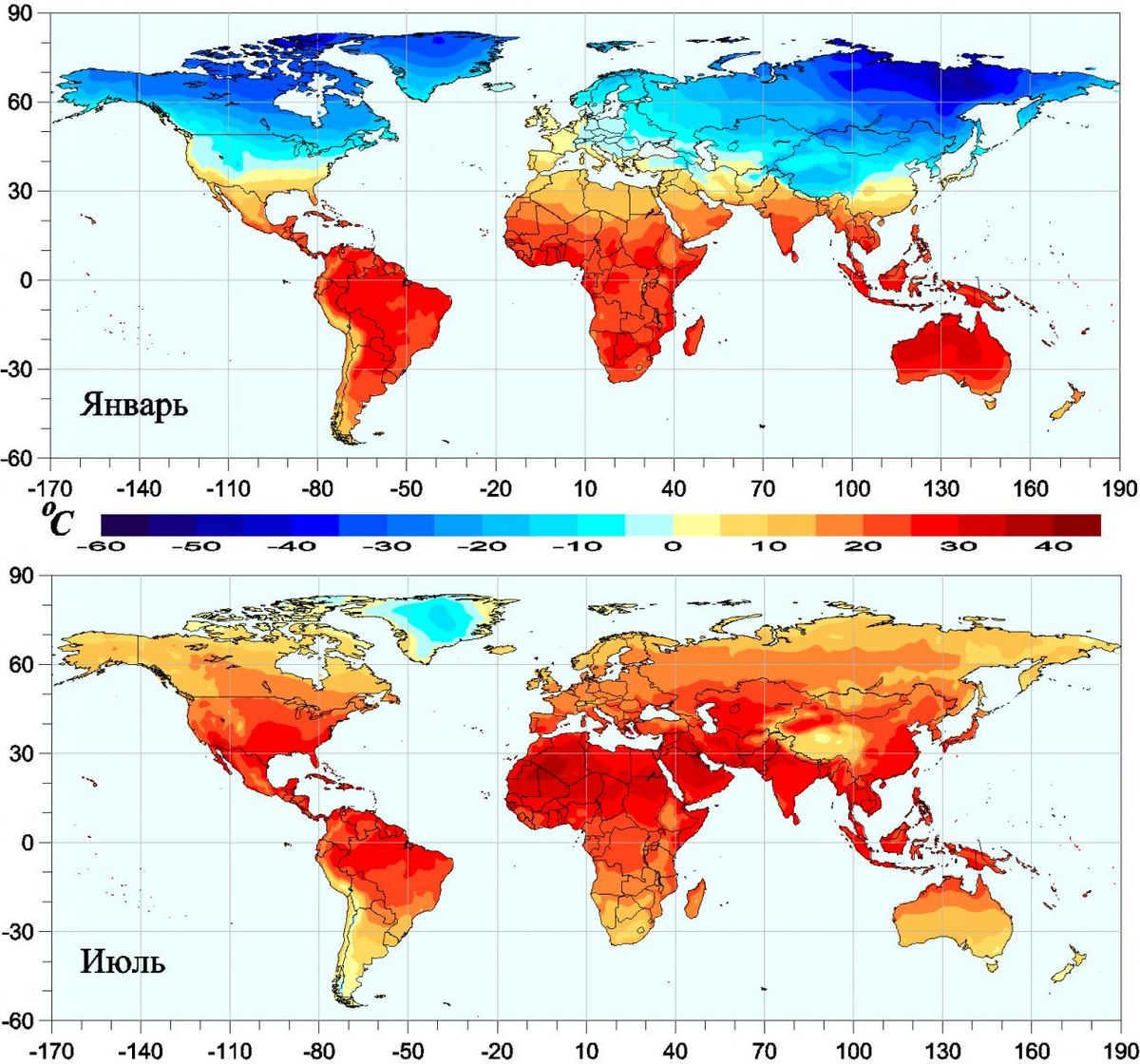
It has been observed that the average yearly temperature is progressively rising. Nevertheless, this variation is within small fractions of a degree.
There exists a region on the planet where the temperature remains constant throughout the entire year. This band is located within the Earth’s crust, with its depth contingent upon the specific latitude, and can be defined as:
Observations from the Past
On certain parts of the Earth’s surface, there have been recorded values that deviate significantly from the average. The lowest temperature ever recorded was in Antarctica in 2010, reaching -93°C.
Conversely, the highest temperature ever observed was in the Iranian desert, reaching +70.7°C. A very similar temperature of 69.3°C was also recorded in Australia.
The largest difference between the highest and lowest temperatures within a single day occurred in the United States in 1916, with a staggering difference of 55°C.
When meteorologists announce a new record or unusually high values for a specific season, it is important to note that these are compared to data collected over the past 200 years. Prior to that, no such monitoring was conducted.
According to scientific research, the Earth has experienced a total of 5 ice ages over a period of 2.4 billion years. Currently, we are observing the conclusion of the most recent ice age. The rise in temperatures started during the 2nd century AD.
Comparison of Climatic Conditions on Different Planets
When comparing Earth’s climatic conditions with those of other planets, it becomes evident that Earth has the most optimal conditions in the entire solar system.
Mercury experiences the most extreme climatic conditions among all the planets. The side facing the sun reaches scorching temperatures of up to +465°C, while the opposite side freezes at a bone-chilling -184°C.
Venus is not far behind Mercury in terms of extreme temperatures. Its dense atmosphere causes its surface to heat up to a blistering +460°C.
Mars, on the other hand, has the most similar degree of heating to Earth, with temperatures reaching around +20°C. However, this value is only achieved at the equator, as the planet’s poles remain permanently frozen at a frigid -153°C.
Among all the celestial bodies in the solar system, Uranus holds the record for the lowest temperature, plunging to a bone-chilling -224°C. The coldest of the gas giants, Neptune, is only slightly warmer at -218°C.
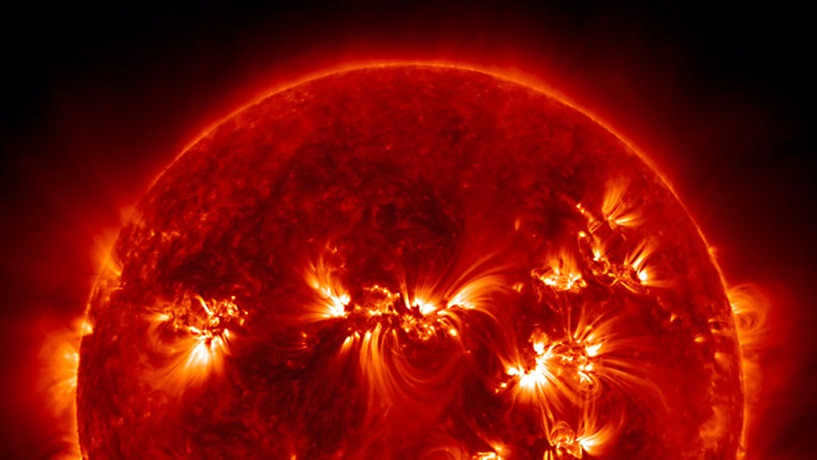
When it comes to discussing the most frigid temperature, things appear to be relatively straightforward. The lowest temperature achievable is known as absolute zero. It is common knowledge that motion generates friction, which in turn creates heat. As a result, absolute zero is the point where all motion ceases. This extreme temperature measures at -273.16 degrees Celsius. Humanity has managed to come astonishingly close to reaching this incredibly low temperature. For instance, scientists at the Massachusetts Institute of Technology (MIT) recently succeeded in cooling molecules to 500 nanokelvins – a mere fraction above absolute zero and more than a million times colder than the vastness of interstellar space.
However, what about the highest temperature? Does absolute heat exist?
Before we can answer that question, let’s examine the scorching temperatures that can be found in our world and throughout the universe.
What is the greatest recorded temperature on Earth?

The Earth’s surface has experienced its highest recorded temperature at 56.7°C. This exceptional heatwave occurred in 1913 within Death Valley, located in California, USA. However, it’s important to note that this temperature is significantly lower compared to the highest temperatures observed in the vast expanse of the Universe.

What is the Sun’s maximum temperature?
Undoubtedly, the Sun is the foremost entity that comes to mind when contemplating the most scorching objects in the cosmos, or at the very least our own solar system. The temperature on the Sun’s surface measures approximately 5500 ° C, whereas in its core, the temperature can soar to a staggering 15 million ° C.
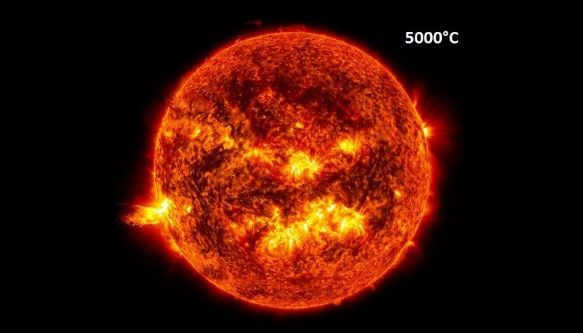
In order to grasp the intensity of this heat, envision heating an iron ball to this particular temperature. The immense heat radiating from the ball would promptly extinguish all forms of life within a span of 2000 kilometers! If this level of heat is not sufficiently scorching for your liking, let’s examine stars that surpass the temperature of our own Sun.
Do any stars have a higher temperature than the Sun?

Indeed, there exist such instances. A seemingly ordinary white dwarf located in the Red Spider Nebula emits light at a staggering temperature of 300,000°C, surpassing the surface temperature of our Sun by more than 50 times. Even more remarkable are quasars, which generate energy equivalent to 100 times the energy output of the entire Milky Way! The surrounding gas of a quasar can reach scorching temperatures of 80 million ° C.

Temperatures at the subatomic level

As can be observed, the temperature scale of the Universe is gradually increasing. Our next step is to return from outer space back to Earth. The record for the highest temperature ever recorded was achieved at the Large Hadron Collider. This cutting-edge facility, situated in Switzerland, is utilized by scientists to study the phenomena that transpire during high-velocity collisions involving atomic particles.

When particles are accelerated to velocities close to that of light and collide with each other, they unleash an immense amount of energy. As a result, within a very short period of time, the temperature soars to an astounding 4 trillion degrees Celsius, surpassing even the temperatures generated by supernova explosions or nuclear detonations! Such an extreme temperature is capable of liquefying even the tiniest subatomic particles, transforming them into a chaotic and disordered mixture.

Within a tiny fraction of a second after the Big Bang, the Standard Model of the Universe recorded the highest temperatures ever witnessed. During this minuscule time frame, the emitted light had a wavelength measuring 10 ^ -35 meters, which is known as the Planck length and is the shortest measurable length in existence. Due to this incredibly small wavelength, the temperature skyrocketed to a staggering 1.416808-10 32 Kelvin, equivalent to 142 quintillion Kelvin (142 nillion according to the short scale). This temperature is referred to as the Planck temperature and currently serves as the closest approximation to “absolute heat” we have.
Aside from being the highest temperature ever theoretically achieved in our universe, the Planck temperature is also believed by physicists to have the potential to generate a black hole if the affected particles’ gravitational forces surpass the Planck standard. This type of black hole, formed from energy rather than matter, is known as a kugelblitz. The existence of such a phenomenon challenges our current models of physics and leaves numerous questions unanswered.
If you find it difficult to comprehend, we recommend watching this video, which will likely provide you with a better understanding of this subject:
What is the maximum temperature that a human can endure?

Cell death starts when the temperature reaches 41°C and continues until 45°C. However, humans can tolerate much higher air temperatures. For example, a person in good health could survive a day trip to Death Valley, USA, even on one of the hottest days, with temperatures as low as -56°C, as long as they stay hydrated.
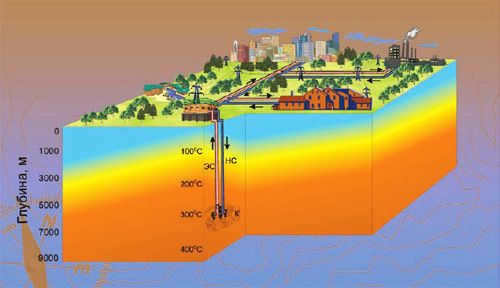
The measurement of the temperature inside the earth is often subjective, as the exact temperature can only be determined at accessible locations like the Kola well, which is 12 kilometers deep. However, it is important to note that this measurement pertains to the outer part of the Earth’s crust.
Different Depths of the Earth and Their Temperatures
Scientists have discovered that the temperature increases by 3 degrees Celsius for every 100 meters of depth into the Earth. This temperature increase remains consistent across all continents and regions. The rate of temperature rise is highest in the upper part of the Earth’s crust, specifically within the first 20 kilometers, after which the temperature increase slows down.
The most significant temperature increase was observed in the United States, where the temperature rose by 150 degrees Celsius for every 1000 meters of depth into the earth. Conversely, the slowest temperature increase was recorded in South Africa, with the thermometer rising by only 6 degrees Celsius.
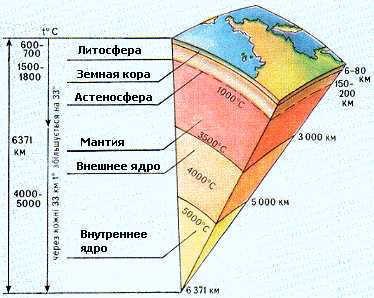
At depths of approximately 35-40 kilometers, the temperature remains relatively constant at around 1400 degrees Celsius. The interface between the mantle and the outer core, which spans depths of 25 to 3000 kilometers, experiences temperatures ranging from 2000 to 3000 degrees Celsius. Deeper within the Earth, the inner core reaches temperatures of up to 4000 degrees Celsius. Recent experiments have revealed that the temperature at the very core of the Earth measures approximately 6000 degrees Celsius. Interestingly, this is also comparable to the temperature found on the surface of the Sun.
Temperatures at the Depths of the Earth: The Range of Extremes
When it comes to determining the lowest and highest temperatures within the Earth, the calculations exclude the data from the zone of consistent temperature. Within this zone, the temperature remains stable throughout the year. This particular zone can be found at depths varying from 5 meters (in tropical regions) to 30 meters (in high latitudes).
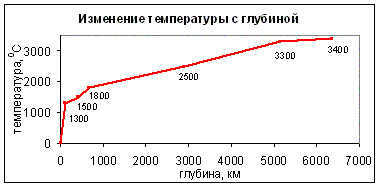
The highest recorded temperature was measured at a depth of approximately 6000 meters and reached 274 degrees Celsius. The lowest temperatures within the Earth are typically found in the northern regions of our planet, where even at depths exceeding 100 meters, thermometers register sub-zero temperatures.
The origin of heat and its distribution within the Earth’s interior
